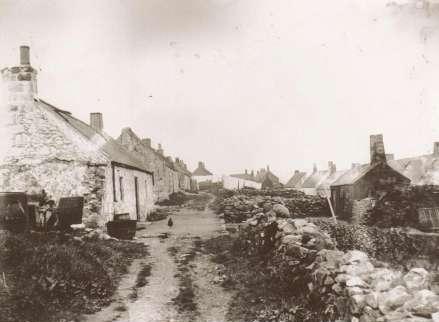
Livestock |
In respect to livestock, the most common commodity was
cattle. In those early years little was done to increase the value of
cattle but once the 19th century arrived there were a number
of individuals who
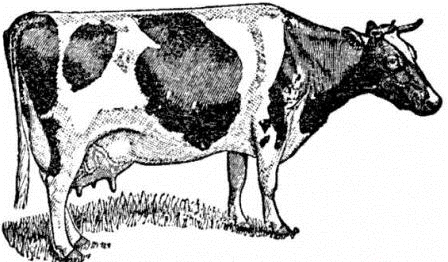 exerted themselves to improve their herds by
selecting the choicest of cattle and utilise them for breeding. One of
the principles of these was Robert Walker of Portlethen (more on this
family later). The best cattle were selected, fed properly throughout
the year and were given a more extensive diet than the regular cattle
and by doing so more vigour was added to their stock and as a result
they began to fetch better market prices.
exerted themselves to improve their herds by
selecting the choicest of cattle and utilise them for breeding. One of
the principles of these was Robert Walker of Portlethen (more on this
family later). The best cattle were selected, fed properly throughout
the year and were given a more extensive diet than the regular cattle
and by doing so more vigour was added to their stock and as a result
they began to fetch better market prices.
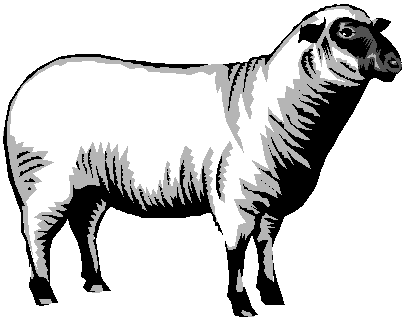 Sheep were another popular choice of livestock in the
Portlethen area although their numbers lagged somewhat behind those of
cattle. It was rare to see large flocks of sheep and the larger farms
focussed more on cattle than on sheep. It may have been the case that
sheep were more popular on the smaller crofts with flocks of half a
dozen to a dozen being kept on these smallholdings.
Sheep were another popular choice of livestock in the
Portlethen area although their numbers lagged somewhat behind those of
cattle. It was rare to see large flocks of sheep and the larger farms
focussed more on cattle than on sheep. It may have been the case that
sheep were more popular on the smaller crofts with flocks of half a
dozen to a dozen being kept on these smallholdings.
 Horses were a staple of all farms – these workhorses were
the equivalent of today’s tractors and machinery. With the passage of
time the demand for work horses increased as did their price and, as a
result, local farmers were induced to rear young horses for themselves
and they were so successful that they were able to supply a great
proportion of that demand. Their preference was still for a pure-bred
Clydesdale and there were a few of these animals scattered throughout
Kincardineshire but the purchase cost was prohibitive. Ultimately these
home bred work horses were soon approaching the efficiency and quality
of the Clydesdale as a work horse.
Horses were a staple of all farms – these workhorses were
the equivalent of today’s tractors and machinery. With the passage of
time the demand for work horses increased as did their price and, as a
result, local farmers were induced to rear young horses for themselves
and they were so successful that they were able to supply a great
proportion of that demand. Their preference was still for a pure-bred
Clydesdale and there were a few of these animals scattered throughout
Kincardineshire but the purchase cost was prohibitive. Ultimately these
home bred work horses were soon approaching the efficiency and quality
of the Clydesdale as a work horse.
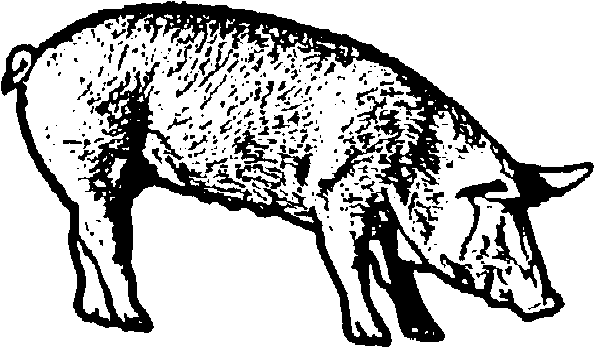 Pigs were farmed in Kincardineshire but I don’t believe
that they had a big presence in the farms around Portlethen or Findon.
In the early 19th century pork was not in great demand around
the country and as a result the prices paid for pigs and hogs were on
the low side. Back in those days livestock had to be profitable and no
one could afford the luxury of raising and tending non-profitable
animals.
Pigs were farmed in Kincardineshire but I don’t believe
that they had a big presence in the farms around Portlethen or Findon.
In the early 19th century pork was not in great demand around
the country and as a result the prices paid for pigs and hogs were on
the low side. Back in those days livestock had to be profitable and no
one could afford the luxury of raising and tending non-profitable
animals.
Poultry was abundant in the area and in most crofts and
farms and almost every household with an interest in farming had its
share of barnyard fowls – particularly hens, chickens and a few
roosters.
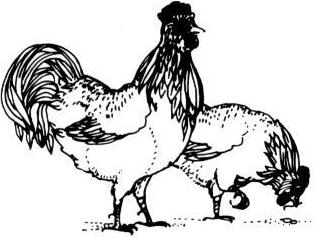 Ducks were plentiful too and they were seen to be paddling in
every gutter and ditch available. Turkey was another that was somewhat
abundant, probably it was popular as a year round bird rather than the
seasonal ones we tend to think of today. There was little in the way of
geese being reared and although there were a few guinea fowls the only
place you were likely to see them would have been around country
gentlemen’s houses.
Ducks were plentiful too and they were seen to be paddling in
every gutter and ditch available. Turkey was another that was somewhat
abundant, probably it was popular as a year round bird rather than the
seasonal ones we tend to think of today. There was little in the way of
geese being reared and although there were a few guinea fowls the only
place you were likely to see them would have been around country
gentlemen’s houses.